| Baird's Sparrow (Ammodramus bairdii) breeds in the northern great plains of North Dakota and Montana as well as parts of southern Manitoba, Alberta, and Saskatchewan. Its winter range, which is poorly known, includes parts of southern Arizona, New Mexico, west Texas and parts of northern Mexico. It can be a very difficult bird to find on the winter grounds due to its skulking habits as well as its tendency to run on the ground like a mouse. In Texas the species is considered a rarity, although it is probably overlooked much of the time. Records of this species in Texas should be thoroughly documented. The first three photos on this page were shot in early May, 1998 at Rio Grande Village, Big Bend National Park in Brewster Co., Texas with a Canon T-90 and FD 400mm F4.5 lens and 1.4X extender on Fuji Sensia 100 film. The camera and lens were mounted on a BushHawk shoulder mount. There had been a significant drought in west Texas that spring and less than 1/4 inch of rain had fallen in the past six months. Rio Grande Village was being irrigated with water from the Rio Grande and the standing water attracted a large number of sparrows, towhees, buntings and other birds. During a period of about 30 minutes, I located three different Baird's Sparrows, the first I'd ever seen in Texas despite more than 20 years of actively birding this state! |
 |
|
 |
| The photo at right shows the classic field mark often described in the field guides of an "orange or ochre central crown." |
 |
| The next 3 photos were taken in June, 2001, at Medicine Lake N.W.R., Sheridan Co., Montana with a Canon EOS 3 and EF 500 F4 L IS lens on a Gitzo tripod and using a Wimberley head. The film was Fuji Velvia pushed one stop. I had been interested in traveling to the breeding range of this species during the summer for many years, and this year I got the chance to do so. I was fortunate enough to get many quality images of this species during the trip. |
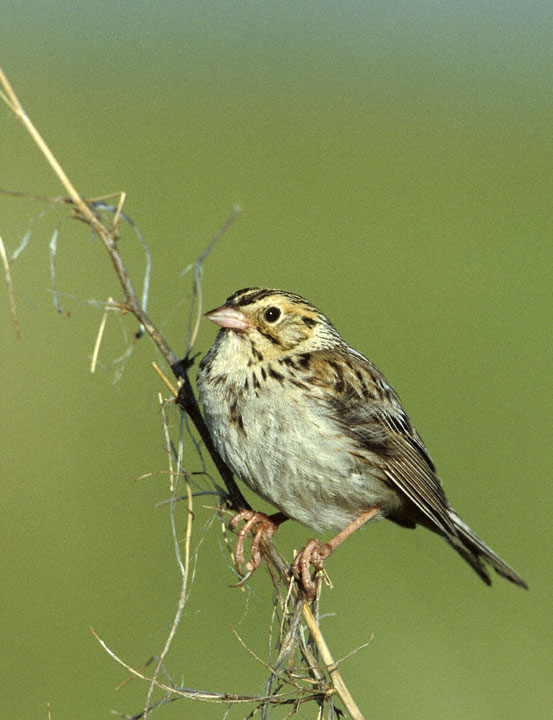 |
|
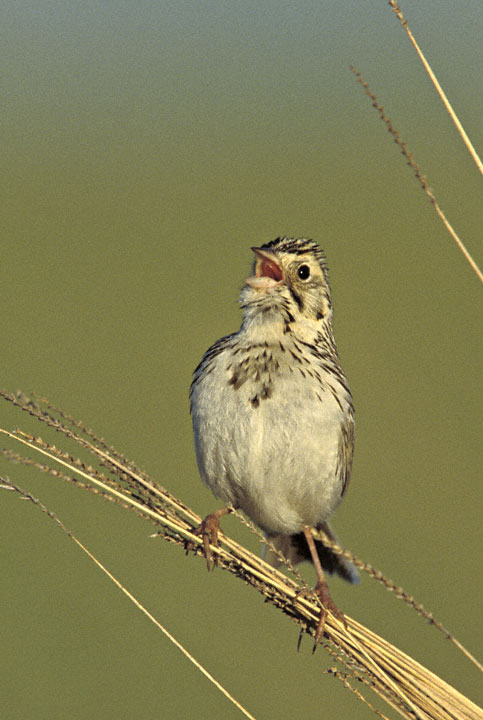 |
|
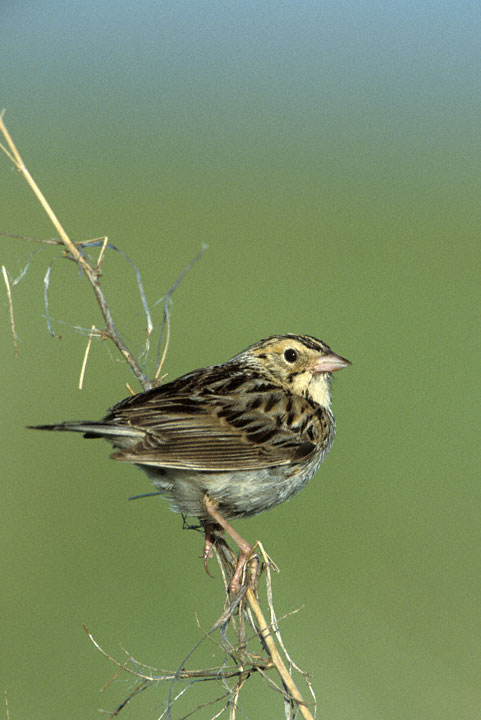 |
| I have added one shot showing the breeding habitat of this sparrow at Medicine Lake N.W.R., Montana, June, 2001. |
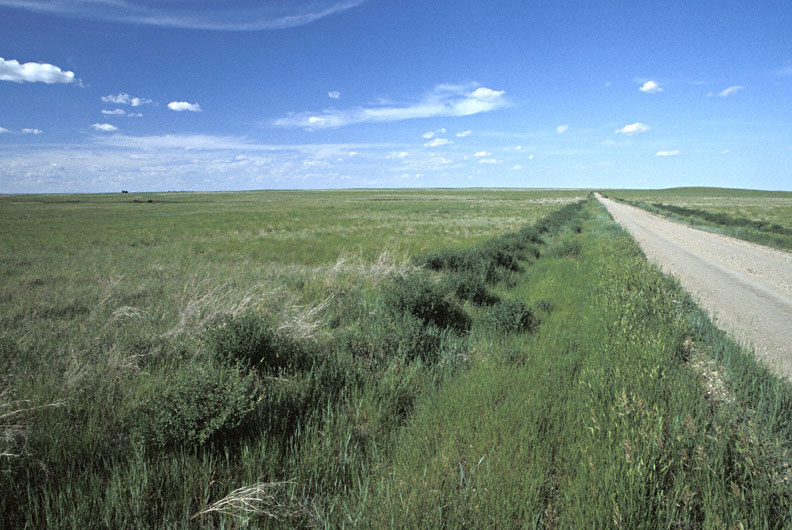 |
| I made another visit to Medicine Lake N.W.R., in June, 2007. The next 27 images of Baird's Sparrows were all taken on that visit with a Canon EOS 1D Mark III and EF 600mm F/4 L IS lens. Most images were taken with a 2X extender as well. My thanks to refuge manager Jerry Rodriguez and refuge biologist Beth Madden for providing information on plant species and for making my visit very enjoyable. The shot shown here shows a Baird's Sparrow peeking from an Alfalfa plant. The next shot shows a Baird's Sparrow standing on the edge of the gravel auto tour road. |
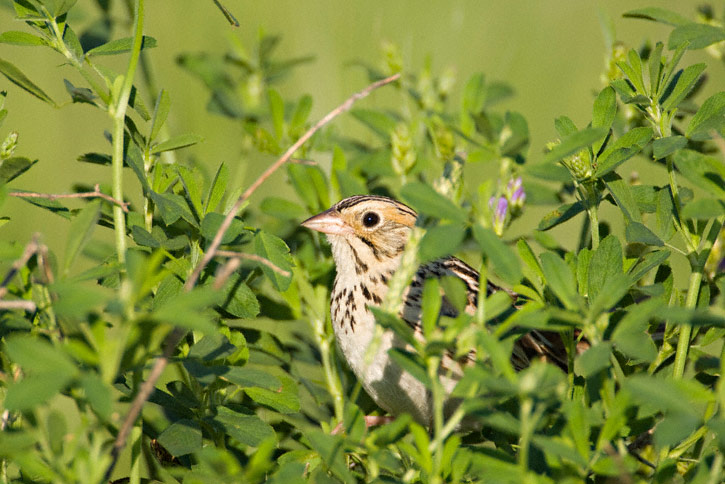 |
|
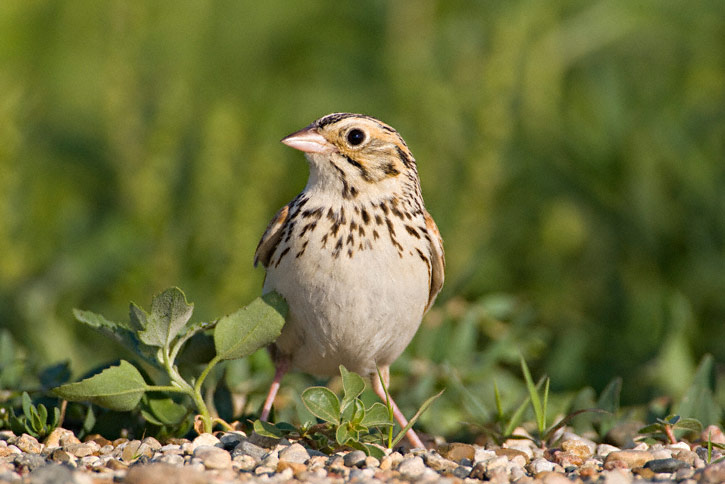 |
| There was a several hundred acre area of grassland on the refuge which had been treated with herbicide to eliminate an exotic, invasive grass species. I found several Baird's Sparrows foraging in this brown habitat. One of the next shots shows a worm in the bill of a bird. The brown, dead grass makes these images appear to be a winter scene, but this was in mid June with lush, green habitat only a few meters away. |
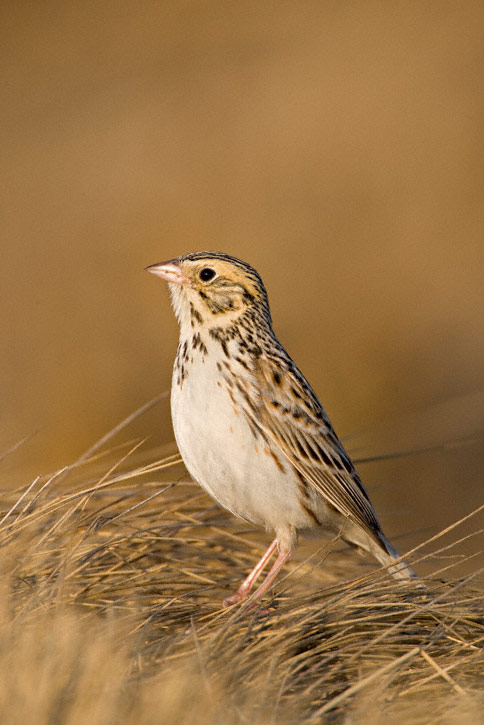 |
|
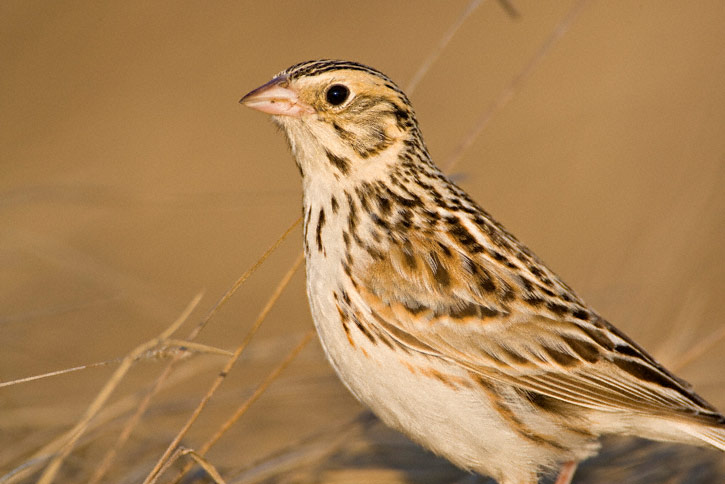 |
|
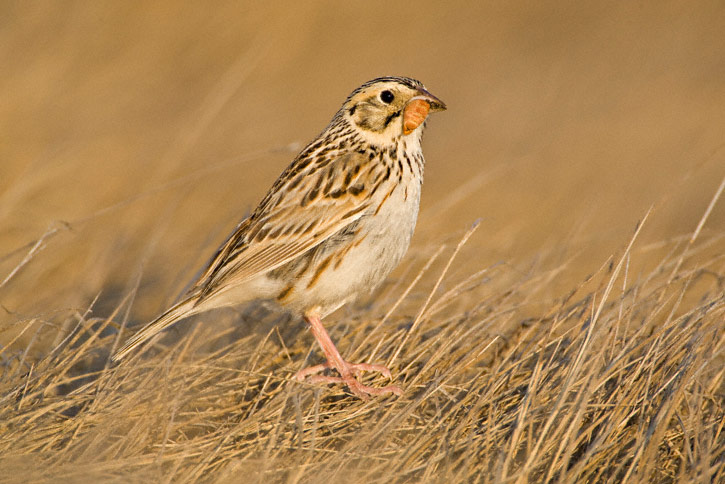 |
|
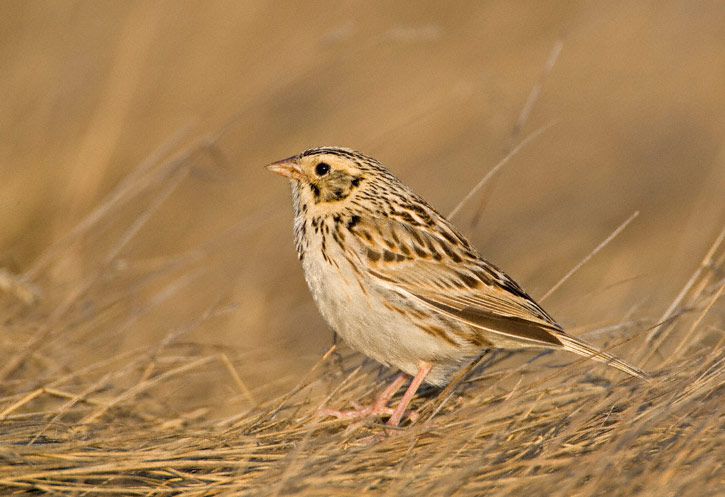 |
|
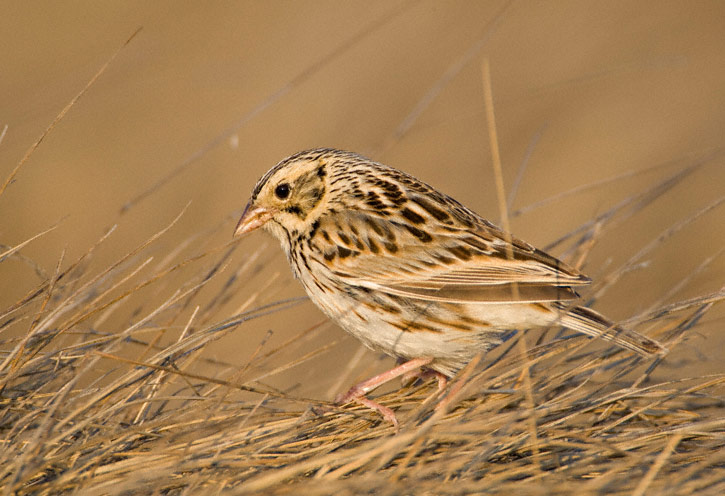 |
|
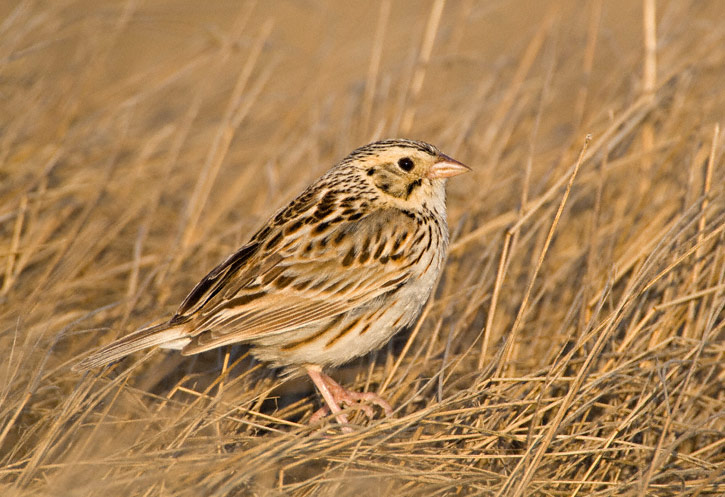 |
| The next three shots shown here show a territorial Baird's Sparrow perched in Crested Wheatgrass which is a non-native invasive grass which most refuges are making efforts to eliminate. This grass species is a real threat to grassland dependent bird species since it tends to take over an area and reduce the variety of other forbes and potential food items for nesting birds. |
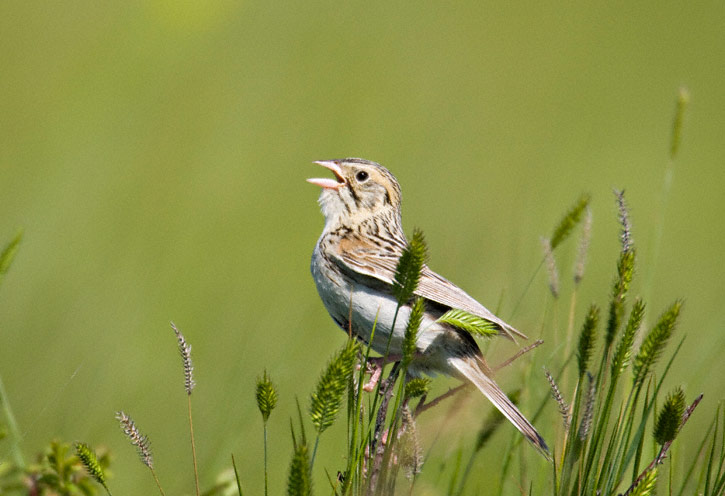 |
|
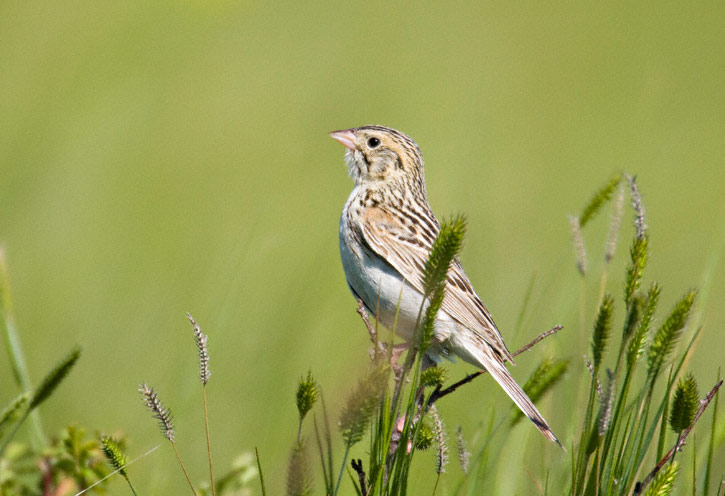 |
|
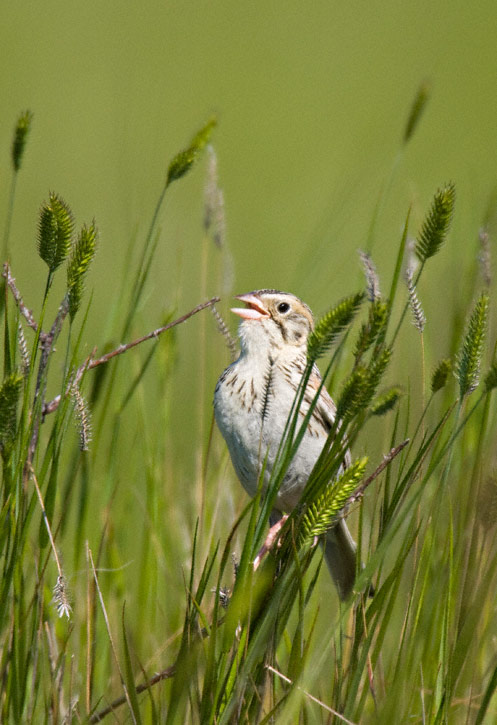 |
| Baird's Sparrow nesting habitat usually is native prairie grassland with relatively few tall song perches. One native shrub which provides a convenient song perch is the Prairie Rose. The next five shots show this sparrow species perched on Prairie Rose. |
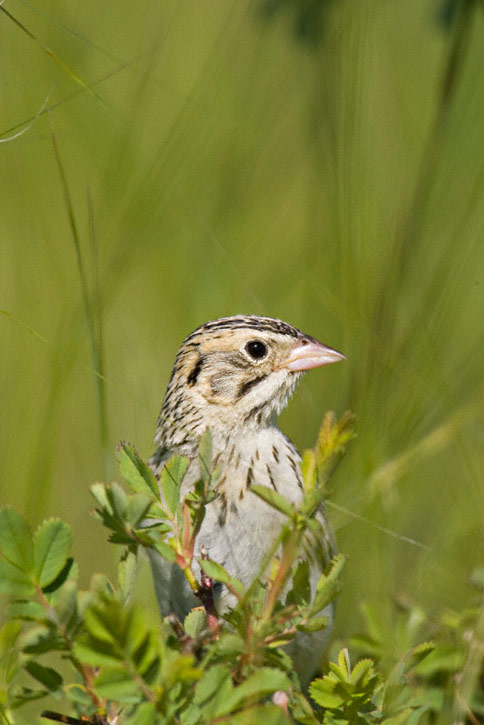 |
|
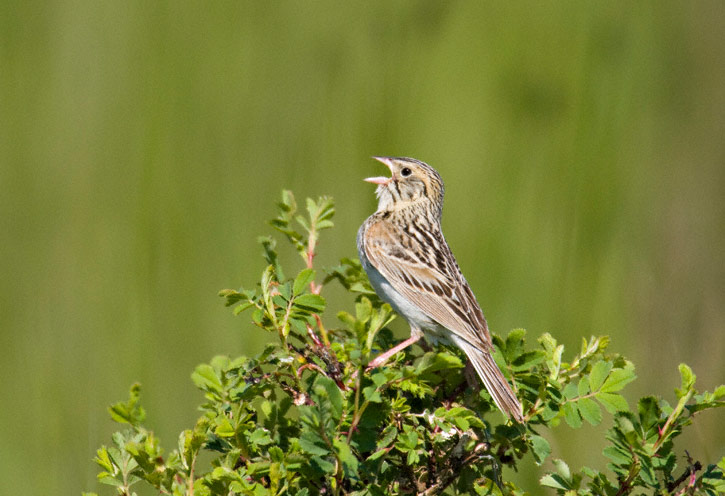 |
|
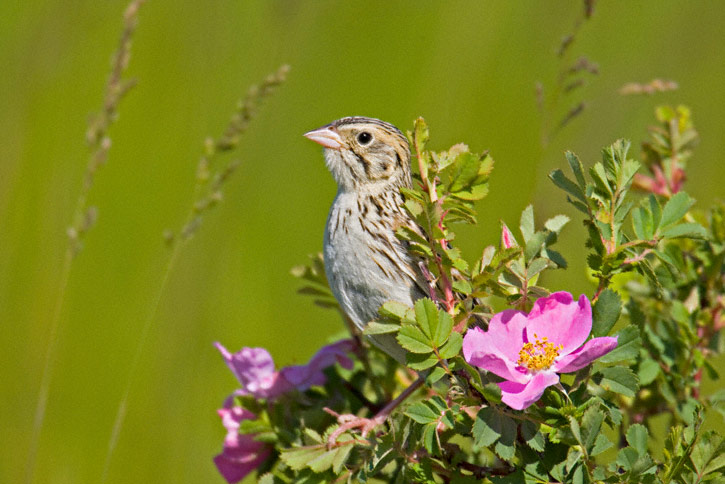 |
|
 |
|
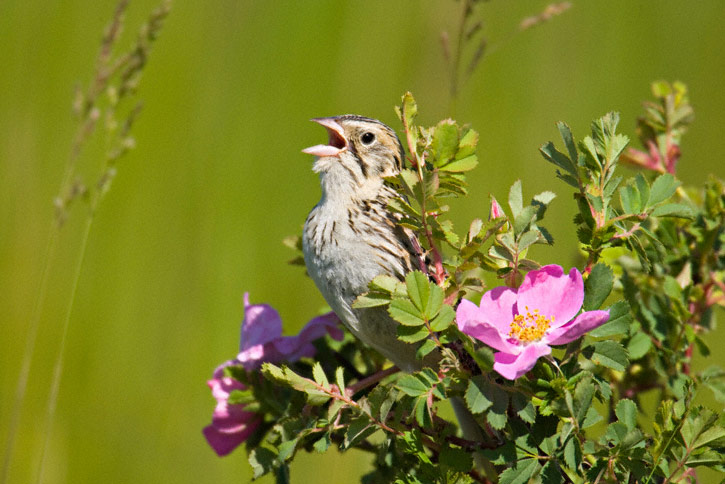 |
| The next images show several different Baird's Sparrows in a variety of poses and perches. |
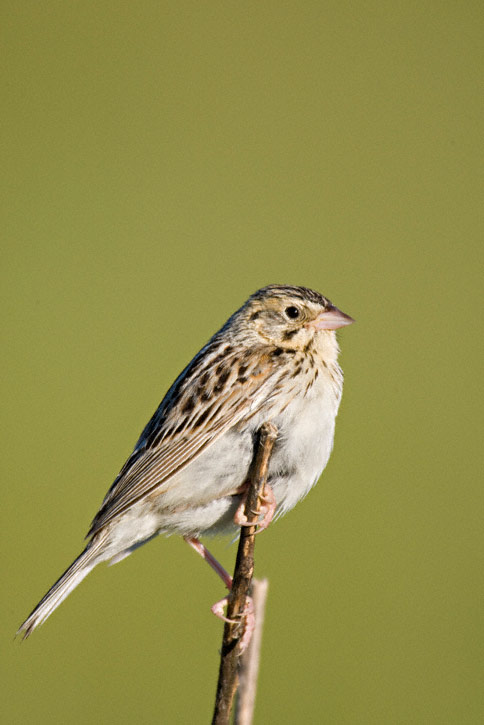 |
|
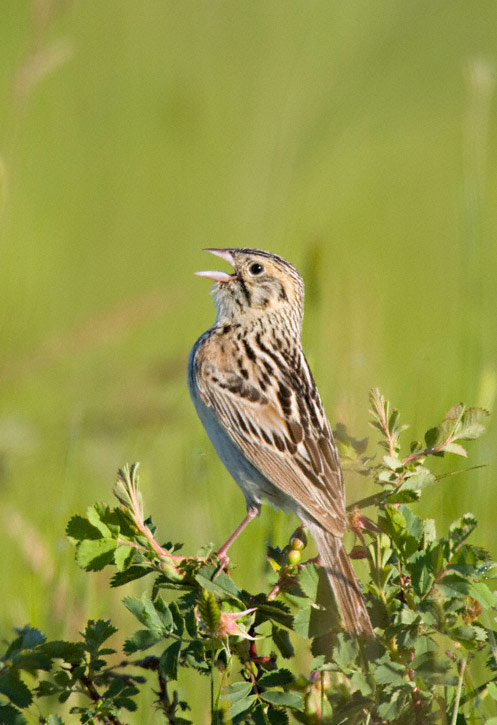 |
|
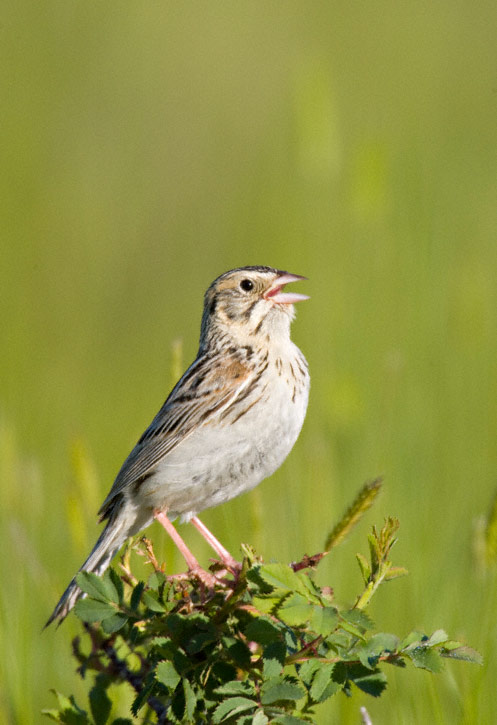 |
|
 |
|
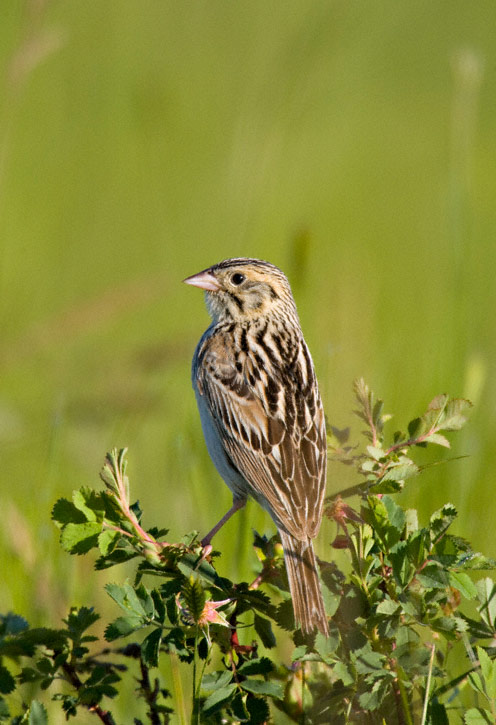 |
|
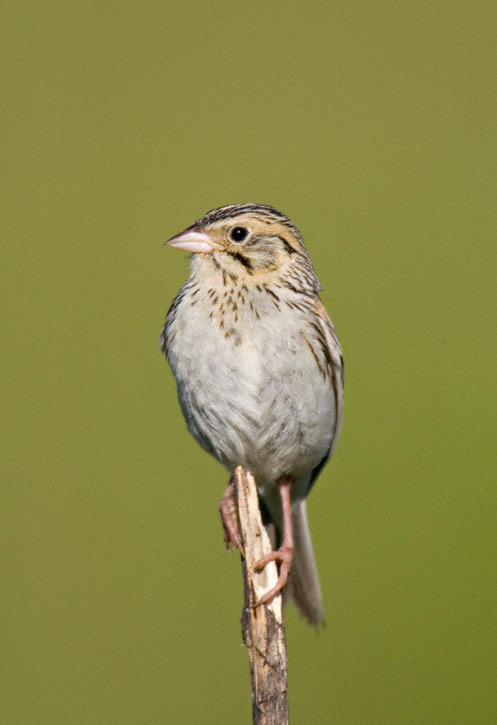 |
|
 |
|
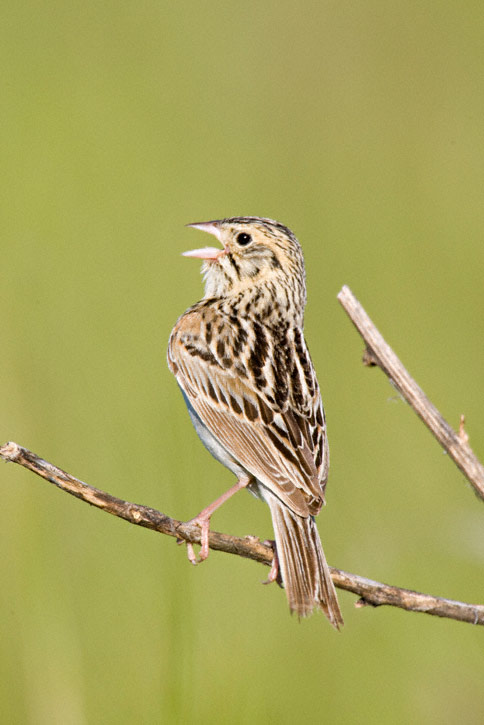 |
|
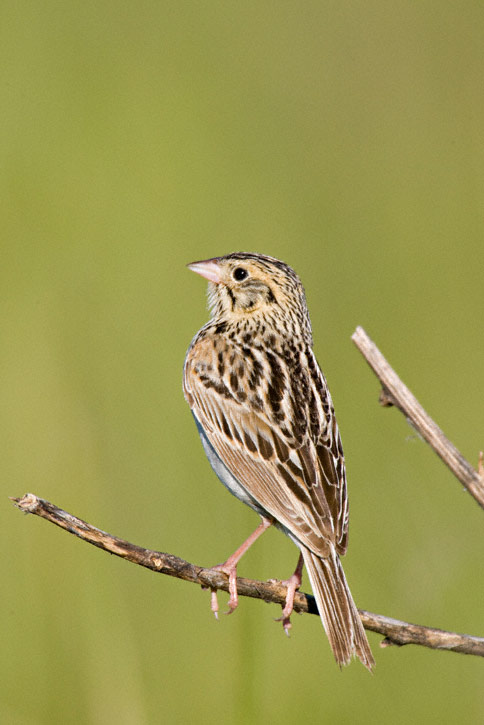 |
| This shot shows the characteristic orangish colored crown patch of this species |
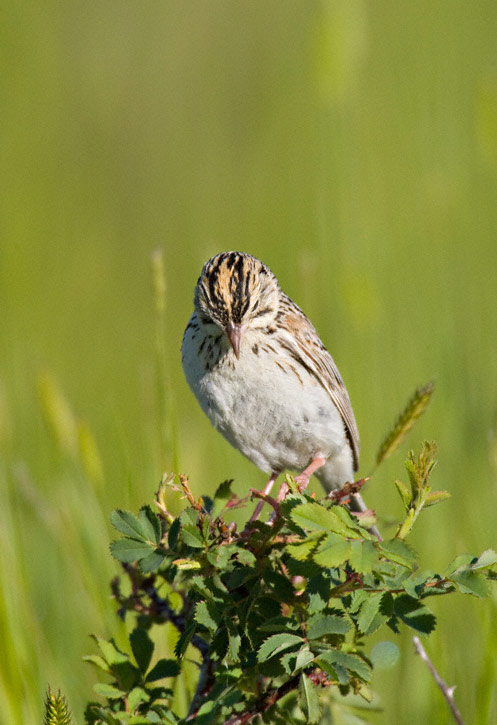 |
|
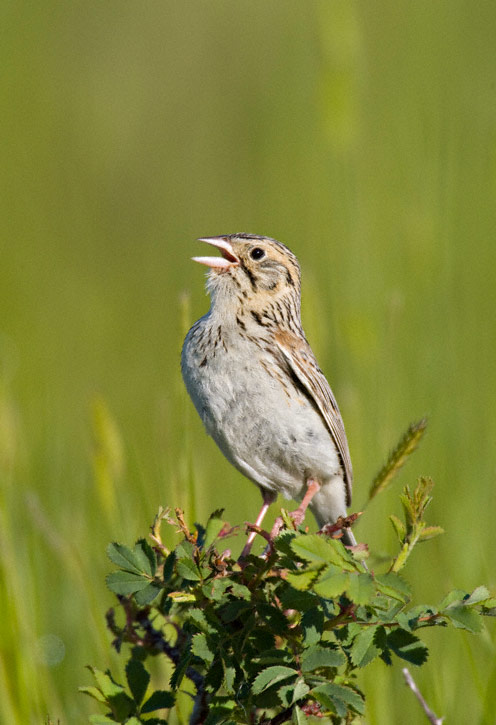 |
| Though not in chronological order, I have added three more shots from June, 2001, showing Baird's Sparrows. The first two shots were taken at Medicine Lake N.W.R., Sheridan Co., Montana. |
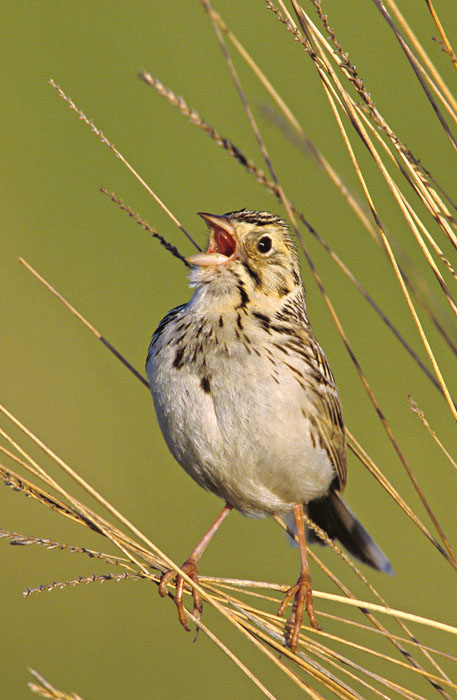 |
|
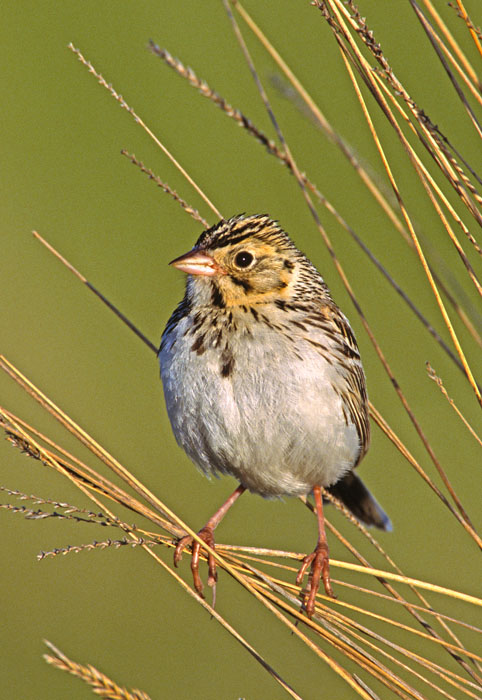 |
| The Baird's Sparrow singing from a strand of barbed wire was in Valley Co., Montana, in June, 2001. |
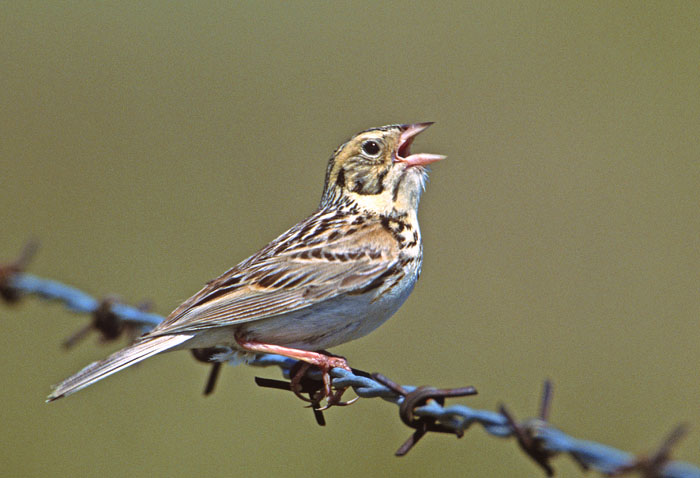 |
|
|
|
|
|
|
|
|
|
|
|
|












































